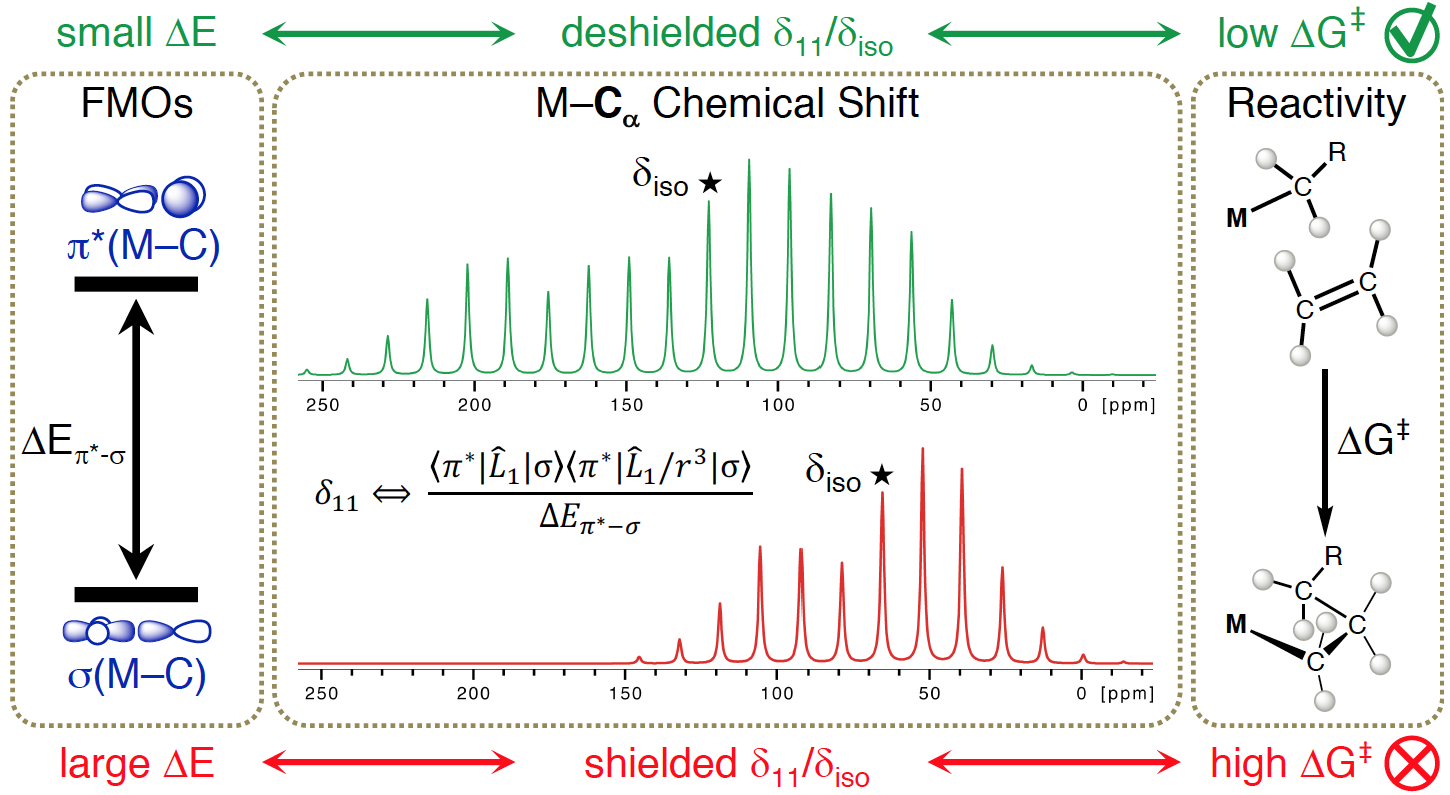NMR chemical shift analysis
NMR chemical shift analysis decodes olefin oligo- and polymerization activity of d0 group 4 metal complexes
In this work we show by a combined experimental and computational study that the 13C NMR chemical shift tensors of the α-carbon of metal alkyls that undergo olefin insertion signal the presence of partial alkylidene character in the metal–carbon bond, which facilitates this reaction. The alkylidene character is traced back to the π-donating interaction of a filled orbital on the alkyl group with an empty low-lying metal d-orbital of appropriate symmetry. This molecular orbital picture establishes a connection between olefin insertion into a metal-alkyl bond and olefin metathesis and a close link between the Cossee–Arlmann and Green–Rooney polymerization mechanisms. The 13C NMR chemical shifts, the α-H agostic interaction, and the low activation barrier of ethylene insertion are, therefore, the results of the same orbital interactions, thus establishing chemical shift tensors as a descriptor for olefin insertion.
Access the paper published in the external pagePNAScall_made journal.

